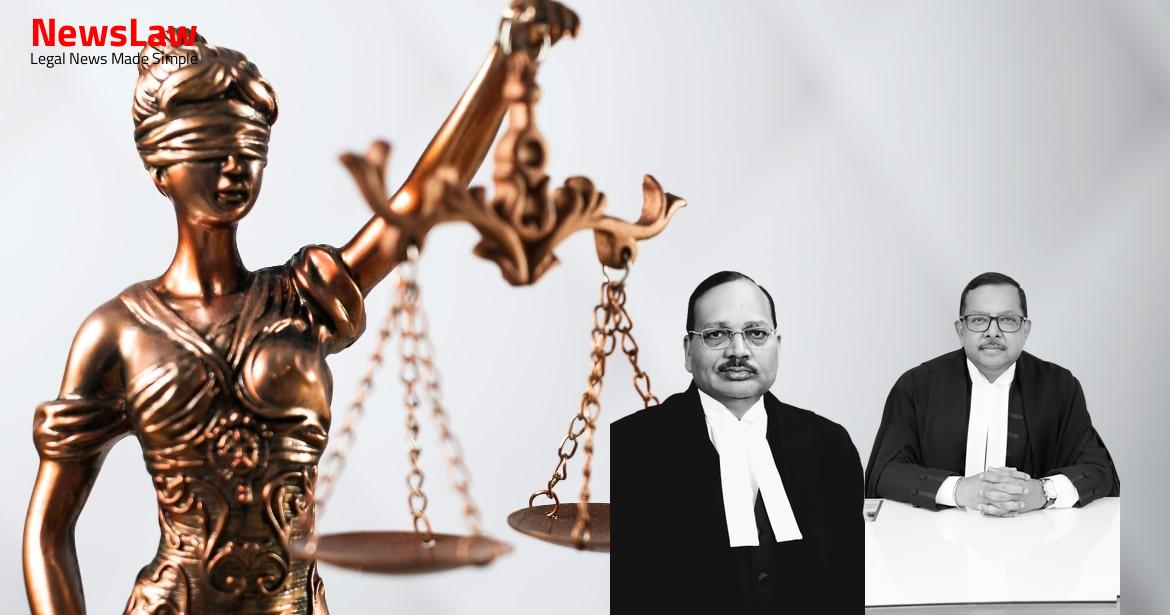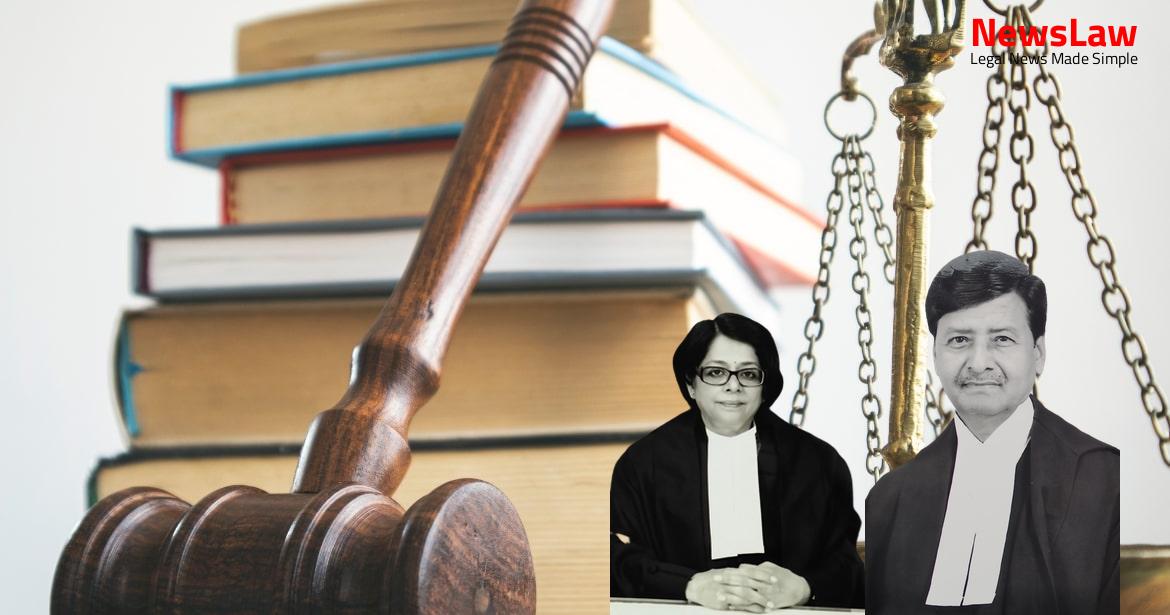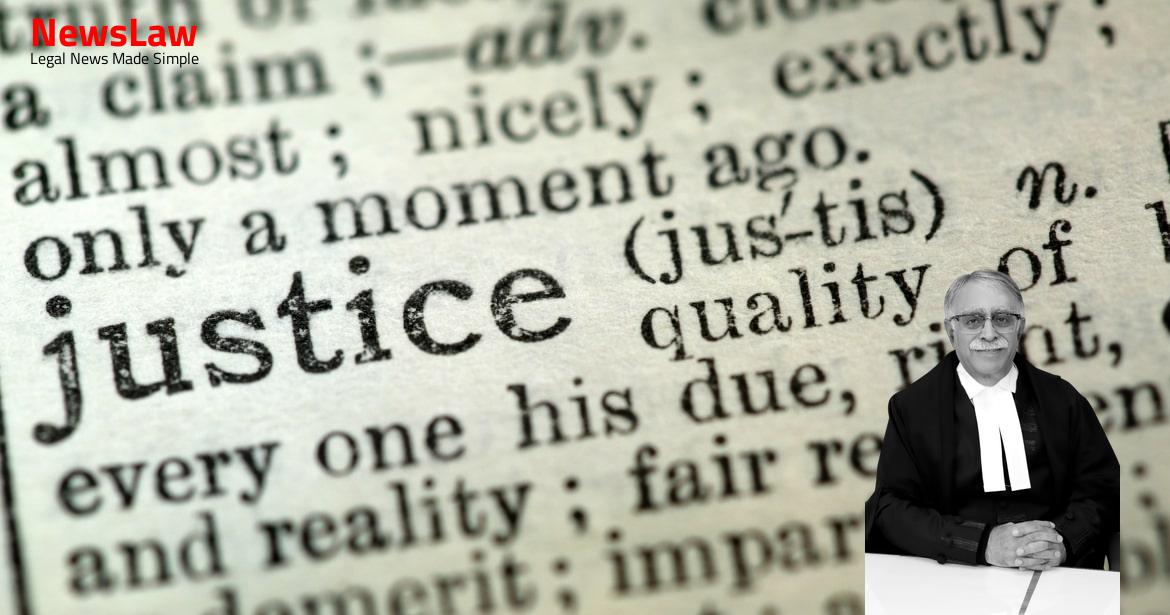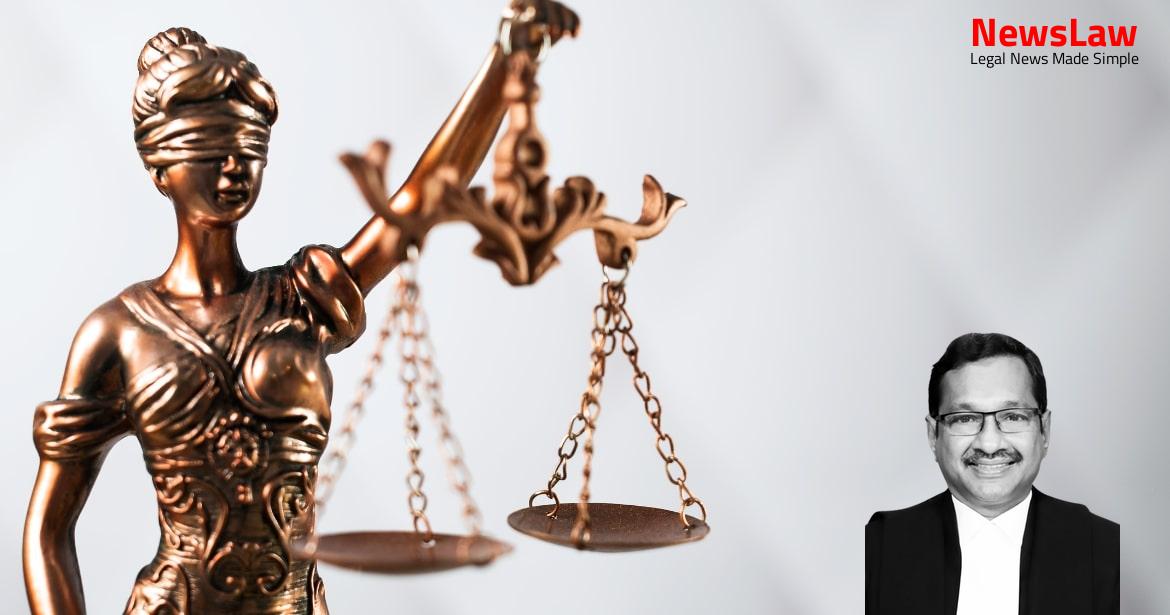In a significant legal development, the Supreme Court of India has delivered a judgment upholding the conviction in the case of The State v. XYZ. The court’s decision comes after thorough consideration of evidence and testimonies presented during the trial. This judgment marks a crucial moment in the legal proceedings involving the State and XYZ, reinforcing the principles of justice and accountability.
Facts
- The Trial Court found two eyewitnesses’ testimony to be trustworthy, corroborated by the Investigating Officer, medical evidence, and weapon recovery.
- The High Court upheld the conviction under Section 302 read with Section 34 of IPC, but acquitted the Appellant under Sections 147 and 148.
- The High Court mentions the presence of the Appellant, lack of motive for false incrimination, corroborated allegations by eyewitnesses, alignment of deceased’s statement with evidence, admissible weapon recovery under Section 27 of IEA, and corroborative testimony of the Investigating Officer.
- The Appellant is discontent with the conviction and appeals.
- The Trial Court’s 2007 judgment based the conviction on key witnesses and medical opinions.
- Contradictions highlighted by the Appellant post the Trial Court’s 2005 judgment, involving the apprehension and trial of Vijay Singh.
- The appeal is against the High Court’s 2017 judgment upholding the conviction under Section 302 read with Section 34 of IPC, while dismissing the appeal against the sentence.
- Eyewitnesses Ajjharruddin, Sukhram, and Reshambai were present during the incident.
- Injuries inflicted were deemed homicidal and caused by hard, blunt, and heavy objects.
- First Information Report (FIR) was lodged by P.W.10 detailing the incident.
- Tillu and Tularam were found injured at different locations.
- Tillu’s injuries were severe, leading to his death at the scene.
- Tularam was barely breathing and required immediate medical attention.
- Accused sought refuge in an unoccupied Jhuggi and assaulted Tillu with a knife.
- After the incident, the injured were taken to Katju Hospital and then to Hamidia Hospital.
- Post-mortem examinations by Dr. C.S. Jain and Dr. Neelam Shrivastava provided crucial evidence.
- Accused persons including the Appellant were charged under relevant sections of the IPC.
- Confiscation of weapons and forensic examination of the knife were conducted by the police.
- Witness testimonies of P.W.10 and P.W.11 were crucial for the prosecution’s case.
- Medical experts confirmed the nature of injuries sustained by the victims.
- Investigating Officer’s actions and recoveries played a significant role in the case.
- The incident involved multiple assailants using various weapons to assault the victims.
- Multiple witnesses and medical reports corroborated the prosecution’s version of events.
Also Read: Speedy Trial Rights Upheld: Bail Granted in X vs. State of India
Arguments
- The defense argued that the statement of the deceased Tularam, recorded by Investigating Officer Girish Bohre, could not be considered a dying declaration due to the lack of certification from a doctor regarding mental fitness.
- Dying declarations made before Investigating Officers/Police are viewed with suspicion and cannot be relied upon.
- Witness Usha Bai named Ahmad, Asgar, Ravi, and Kanija Bi as accused but claimed she did not know anyone else, casting doubt on the accuracy of her statements.
- Witness Lallu Vishwakarma testified that he could not discern who the assailant was in the knife attack.
- The weapon confiscated from the Appellant underwent inconclusive FSL examination results, suggesting potential false implication.
- Inconclusive forensic test results were presented regarding the blood group determination on the weapon allegedly retrieved from the Appellant.
- The defense contended that the High Court made an error in upholding the conviction of the Appellant under Section 302/34 of the IPC.
- Witness Lallu Vishwakarma claimed the Appellant was present and involved in the incident, contradicting other evidence.
- The Complainant, Usha Bai, admitted under cross-examination that she was not familiar with the Appellant and was instructed by the Police while providing her statement.
- The presence of the Appellant at the scene of the crime was disputed, suggesting false implication.
- Identification tests were deemed unreliable as substantive evidence by the defense.
- Witness Lallu Vishwakarma identified the Appellant in court, but witness Usha Bai did not mention the Appellant in her statement or provide names of assailants as recorded by the Police in the FIR.
- The Courts below affirmed the presence of the Appellant at the incident site based on P.W.11’s testimony.
- Accusation of the Appellant inflicting the knife blow on the deceased was supported by medical evidence.
- The voluntary disclosure of the concealed knife by the Appellant strengthens the prosecution’s case.
- The Investigating Officer did not obtain a fitness certificate from the medical officer before recording Tularam’s statement under Section 161 CrPC.
- Contrary views were presented by the Counsel for the Appellant and the State regarding the admissibility of the statement as a dying declaration.
Also Read: Rizvi Committee Pay Scale Judgment: Upholding Justice and Equity
Analysis
- The FIR was read out and explained to the Informant, Usha Bai, who then put her thumb impression.
- Usha Bai claimed during cross-examination that the Police did not inform her about the contents of the FIR due to her illiteracy.
- Despite attempts to influence Usha Bai’s testimony, she confirmed the registration of the FIR based on her complaint.
- The omission of reading out the FIR did not cause any prejudice to the Appellant as it did not hinder his ability to cross-examine the Informant.
- The testimonies of key witnesses which include Usha Bai, Lallu Vishwakarma, and medical professionals form the basis of the prosecution’s case.
- The prosecution case is predominantly dependent on the consistent testimonies and corroborating evidence provided by the witnesses.
- Failure to hold TIP does not invalidate the witness testimonies.
- Inconsistencies in the FIR recording or spot map markings do not undermine the strength of the prosecution’s case.
- Eyewitness testimonies were found to be detailed and consistent, supporting the prosecution’s version of events.
- The absence of conclusive blood group analysis results was construed in favor of the Appellant.
- The FIR was deemed to satisfy all requirements of Section 154 CrPC and was filed promptly after the incident.
- The witnesses’ testimonies were not considered unreliable due to minor discrepancies or inconsistencies.
- The disclosure statement made by the Appellant leading to the discovery of a weapon was considered admissible in evidence.
- Key witnesses like Usha Bai and Lallu Vishwakarma were found credible despite being illiterate laborers.
- The statements of witnesses were evaluated holistically, considering the immediate recording of their testimonies by the Investigating Officer.
- The corroborative evidence and consistency of witness testimonies overshadowed minor discrepancies in the investigation process.
- The Trial Court and High Court both affirmed the prosecution’s version, indicating the strength of the case against the Appellant.
- The presence of human blood on the knife recovered from the Appellant added weight to the prosecution’s case.
- The Appellant’s failure to provide an alibi or challenge the evidence further supported the prosecution’s case.
- Overall, the analysis of witness testimonies, the FIR, and other evidences pointed towards the guilt of the Appellant beyond a reasonable doubt.
- The person recording a dying declaration must ensure the deceased was in a fit state of mind.
- A TIP (Test Identification Parade) is not obligatory for the person recording a dying declaration.
- Criteria for admissibility of a disclosure statement under Section 27 of the IEA include: discovery of fact, information received from the accused, the informant being in police custody, and relevance of information disclosed.
- The disclosure statement made by the Appellant in police custody led to the recovery of the weapon of offence, a knife.
- Factors considered to determine the voluntariness of a statement include the circumstances of the confrontation, lighting, witness familiarity, etc.
- The knife injury attributed to the Appellant was established by medical witnesses.
- The recovery of the weapon of offence based on the Appellant’s disclosure statement was confirmed by the Investigating Officer.
- A dying declaration can be oral or written if positively and definitively communicated.
- Medical certification of the declarant’s fitness is not indispensable if eyewitnesses confirm their conscious state during the declaration.
- Non-explanation of human blood on the weapon of crime is considered a circumstantial evidence against the accused.
- Section 161 CrPC allows police to orally examine persons acquainted with the facts of a case.
- Section 162(2) CrPC makes an exception for statements falling within Section 32(1) of the IEA.
- Statements by a deceased person to a police officer about the cause of death are admissible.
- Such statements then hold the status of a dying declaration.
- Section 162(1) CrPC prohibits signed statements to be used in evidence except for contradiction.
- Mere non-obtainment of a medical fitness certificate does not negate a statement recorded under Section 161 CrPC from being considered a dying declaration.
- No contradictions or discrepancies found in the prosecution case warranting a different view from the Trial Court and High Court.
- The appeal is dismissed and if the Appellant is on bail, the bail bonds are canceled, directing them to surrender. If already in custody, the Appellant shall complete the remainder of the sentence.
Also Read: High-Powered Sale Committee Formation for Asset Auction in Sai Group of Companies Case
Decision
- The court emphasized the importance of complying with the rules of the Right to Information Act, 2005.
- It stated that the Public Information Officer must provide information within the stipulated time frame.
- The court highlighted that the delay in providing information goes against the spirit of the Act and is against the public interest.
- It also pointed out that the PIO must provide reasons for denying information to the applicant.
- The judgment emphasized the significance of transparency and accountability in governance.
- The court directed the Public Information Officer to proactively disclose information to the public.
Case Title: DARMENDRA KUMAR @ DHAMMA Vs. THE STATE OF MADHYA PRADESH (2024 INSC 480)
Case Number: Crl.A. No.-002806-002806 – 2024



